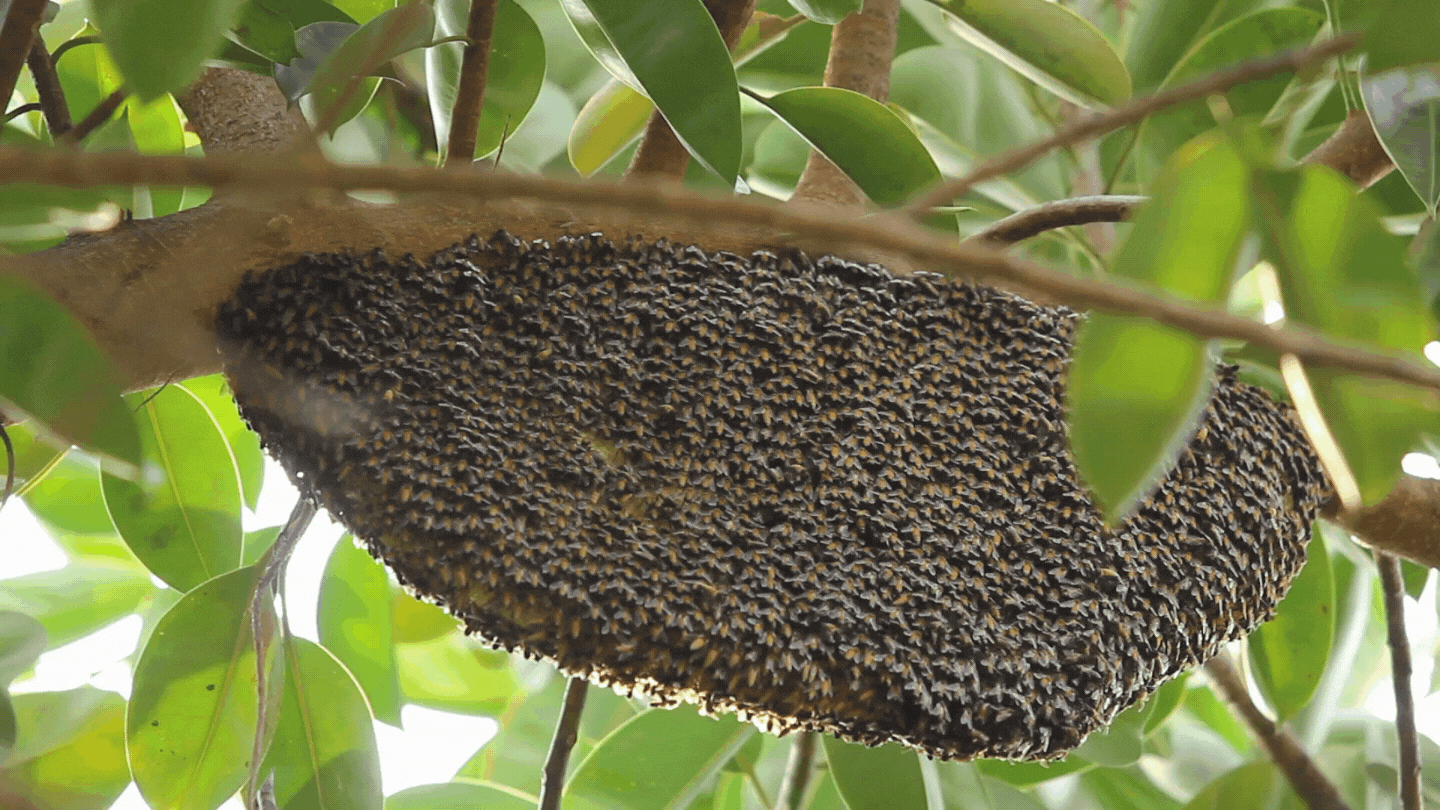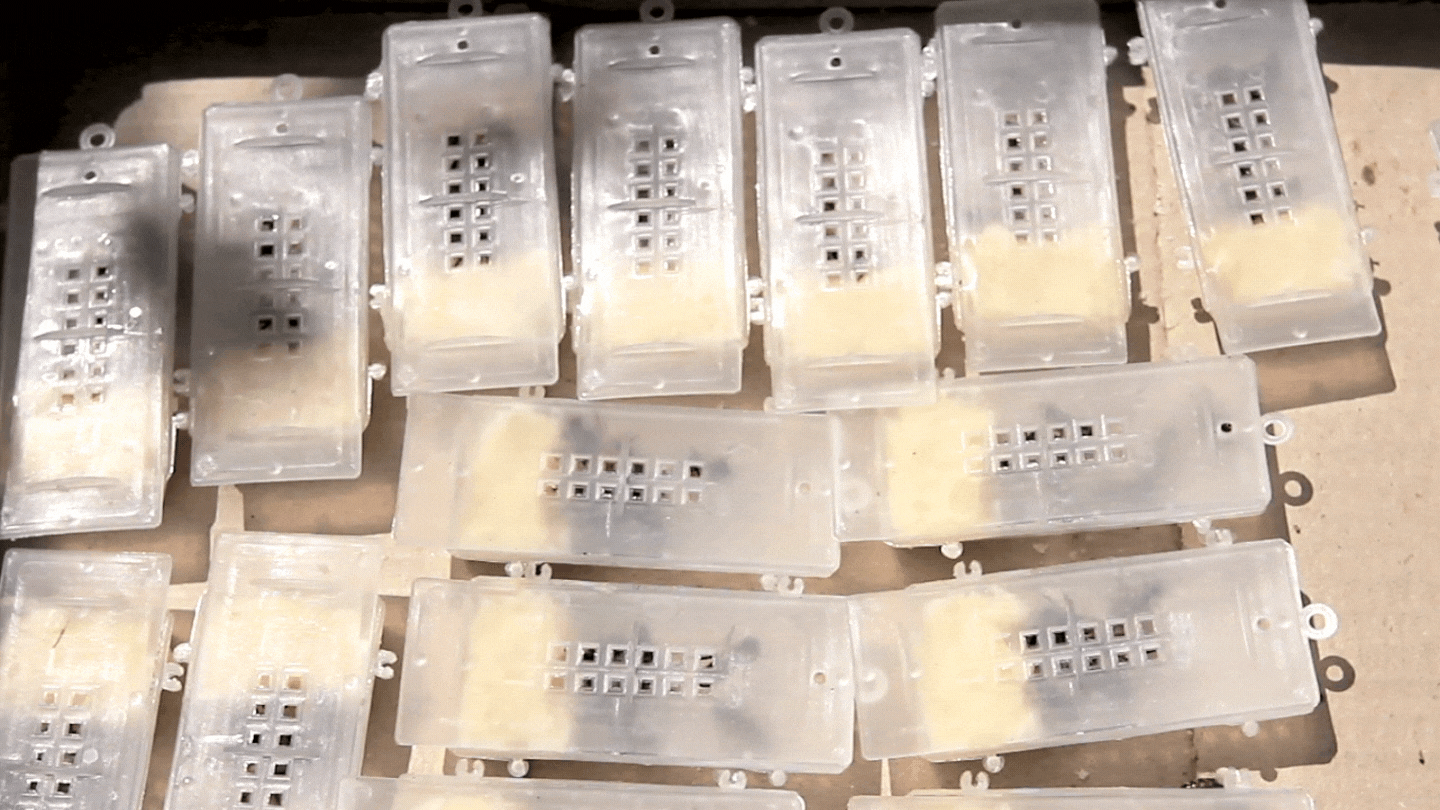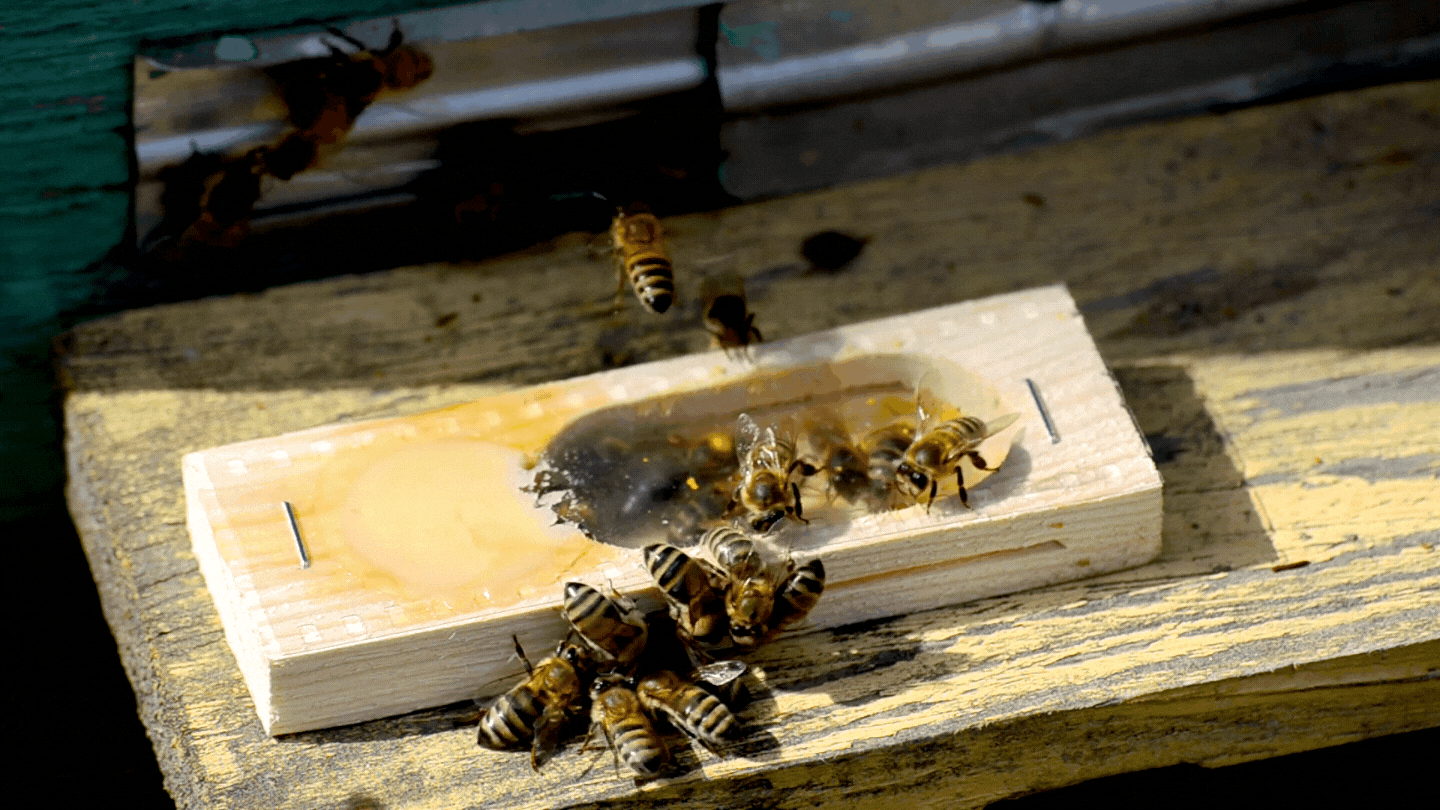Populating your beehive is a common activity for beekeepers. Colonies often die, or the queen may need to be replaced, making it your responsibility to introduce your hive with additional bees.
In this article, we’ll walk you through the ins and outs of obtaining honey bees for your apiary.
Honey Bee Colony Basics
This post goes into depth about the three different roles in the bee community. But, as a brief reminder, these are the three roles and their responsibilities;
- Worker – Female bees that are responsible for honey production and hive maintenance
- Drone – Male bees are responsible for mating and taking care of the queen
- Queen – The single queen in each hive is responsible for mating with the drones and laying eggs to repopulate the colony
All three bee roles must remain healthy to ensure the colony’s stability.
How To Get Bees
One of the essential things to consider is where you’ll be sourcing the bees. Climate has an immense influence on your colony’s survival rate.
If you buy them locally, your bees will already have adapted to survive in your area. It is the most significant way to ensure that your bees thrive.
The following are the most popular methods for finding and introducing bees to your hive:
Packaged Bees
The best way to order a package of bees is to go to local bee suppliers or local beekeeping associations. Once the package of bees arrives, the beginning beekeeper will have to devote more time and attention to them until they establish.
The package will include a queen, several workers, and a sugar syrup feeder. The bee provider should provide you with instructions on how to get the package bees up and running and introduce the queen bee to the other bees in your hive.
Also, they will include a protective cage in your bundle of bees to keep her safe from harm.
The indirect method is the most common way of introducing a queen. The worker bees learn about the new queen as they munch through the food plug in her cage.
A package of bees has many benefits:
- You can see the bees assemble their hive from the ground up.
- You can gain a deeper understanding of beekeeping through a more practical approach.
- For packaged bees, you can use any model of the hive.
- Success rates are high.
- Cost-effective compared to nucleus colony setups.
Nucs – Nucleus Colonies
Ordering a nucleus hive is also possible. A nucleus (sometimes known as a “nuc”) is a small colony. A 5-frame nuc is the most common size.
You get five frames of comb, honey, bees, a queen, and brood (baby bees). Buying a nuc provides you a head start on colony expansion.
A disadvantage of this method is that the honeycomb from the donor hive may include parasites and diseases that could infect your hive, making it more dangerous than using packaged bees.
Also, nucs demand hives with deep frames, so the bees will not have adequate space if you currently have a beehive without frames.
The key benefit is that the colony has already accepted the queen into the hive. The queen will lay eggs, and because there are many bees, the hive will be more stable, and there won’t be a rush to produce eggs.
To learn more about bee nucs, click here to read our full post.
Established Hives
Buying established hives is the most convenient way for a beginner beekeeper to start. Whether from an experienced beekeeper or a business, the established colony has massive benefits for a new beekeeper. However, the quality of all the beehives for sale varies.
Most professional bee breeders who sell hives are ready to answer any queries. The hive and the colony may be in good health, but don’t rely solely on the assurances of the bee breeders’ keeper. Instead, do:
- Consider visiting the vendor in person so you can check the beekeeping supplies and equipment firsthand before buying it.
- Check the brood and food stocks by removing a few frames.
- Check out the seller’s equipment and see how they handle the bees.
Catching a Swarm
When a colony of bees outgrows its hives, they swarm. The queen will take half of the bees with her and leave the other half to raise a new queen.
It’s an excellent method of getting free honeybees. The queen and her swarm will randomly cluster somewhere for a brief spell while picking a new home.
If you come across swarms of bees, you can catch them and bring them back to your hive. You can also place a “bait hive,” and a swarm will probably move in. While this is a low-cost method of getting bees, it is not without drawbacks.
The swarm you catch can be sick and has escaped from its original home. It can also be very aggressive when inexperienced beekeepers show fear, which bees can easily sense.
However, given that they are free, it may be worth the risk.

Types Of Honey Bees
There are over 1,000 types of honeybees worldwide. And some are more common than others.
Different types of bees can certainly be introduced to your colony to improve their strain or genetic makeup but these decisions should not be taken lightly.
Consult your local bee association or reputable online bee provider before introducing new types of honey bees to your colony.
When to Order Honey Bees
Order them early spring to get your bees placed in the hive on time. Place your order early to ensure your bees arrive on time.
Bees prefer to build a new hive in the spring when the weather is warming up. As the season progresses, their activity levels rise, and they can care for and expand their hive.
Don’t accept the delivery before the weather in your region has warmed up a bit. Your goal is to get the bees up and running so they may begin developing the hive and making it their own.
If you’re a beginner, find out when spring arrives in your area and start preparing your hive then. Local beekeepers can help you figure out the best time to order honey bees.
Where to Buy Honey Bees
1. Beekeeping associations in your area
Beekeeping associations are common in places where beekeeping is legal. In most cases, the work of the association is to spread knowledge about the industry to the community. Also, such associations take part in commercial activities, such as the sale of bees. If you live in an area with a beekeeping association, you may find honey bees for sale there.
Buying bees from a local beekeeping association will provide you with the following benefits:
- You will learn about the environmental and economic importance of bees.
- You will also learn how to care for the bees and feed them.
- The association is an excellent way to meet other beekeepers and share ideas.
2. Other beekeepers
Beekeeping is popular for a variety of reasons. Beekeepers can use them for a variety of purposes, including:
- Crop cross-pollination
- A hobby
- Selling honey
- Selling honeybees
Buying bees bred locally is preferable to buying bees bred elsewhere because of their familiarity with the local environment.
Requeening a Hive
There are three possible events after which requeening your hive is necessary. First, if the queen bee dies. Second, if the queen’s performance begins to slow. And third, if your colony hasn’t replaced the queen after a specific duration of life.
If either of these events occurs, you’ll need to consider your requeening options carefully.
When requeening a hive, you have two options;
Direct requeening
This is the least preferred method.
In most cases, if you position the new laying queen directly into the hive, the new bees will either eat her or sting her to death. You run the danger of them mistaking her for a threat to the hive. The reason is that they haven’t got to know her yet.
Indirect requeening
Your best bet is to introduce the new queen to the hive indirectly. Fortunately, there are two methods to approach this:
1. Raise a queen of your own
Your colony will often introduce a new queen on its own or you can consider raising a queen outside of the colony.
By using a queen cage, many of which resemble a large clamp, you can encircle the queen to protect it while transporting it easily.
Introducing the new queen by placing the queen cage between the hive’s frames will allow the brood to become familiar with the new queen before releasing it.

2. Buy new queens
The second strategy works best. By ordering a new queen you eliminate the work of raising a queen on your own. You will use a sugar plug to introduce the queen to the colony.
After two or three days, the colony will have accepted the queen into the hive when the bees eat through the plug.
The requeening process may sound complicated, but it’s relatively simple. Your hive and your current level of beekeeping dictate which method is ideal for you.
NOTE: The average cost of a new queen bee is $25 and $40, with some more desirable breeds commanding $70-$200+.


